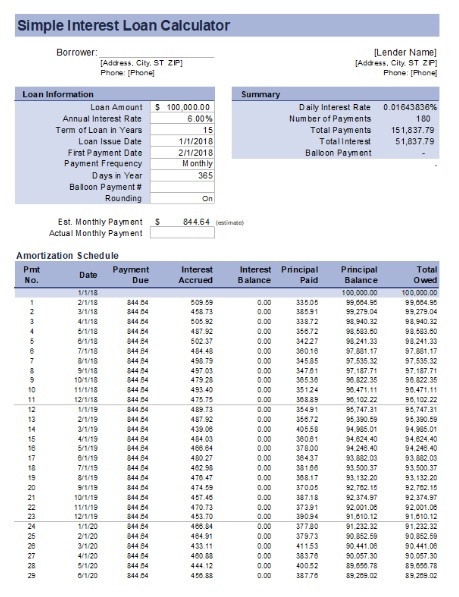

Items that are commonly amortized for the purpose of spreading costs include machinery, buildings, and equipment. Spreading CostsĬertain businesses sometimes purchase expensive items that are used for long periods of time that are classified as investments. Generally, amortization schedules only work for fixed-rate loans and not adjustable-rate mortgages, variable rate loans, or lines of credit. Also, amortization schedules generally do not consider fees. An amortization schedule helps indicate the specific amount that will be paid towards each, along with the interest and principal paid to date, and the remaining principal balance after each pay period.īasic amortization schedules do not account for extra payments, but this doesn't mean that borrowers can't pay extra towards their loans. Each repayment for an amortized loan will contain both an interest payment and payment towards the principal balance, which varies for each pay period. Each calculation done by the calculator will also come with an annual and monthly amortization schedule above. The former includes an interest-only period of payment, and the latter has a large principal payment at loan maturity.Īn amortization schedule (sometimes called an amortization table) is a table detailing each periodic payment on an amortizing loan. Examples of other loans that aren't amortized include interest-only loans and balloon loans. Please use our Credit Card Calculator for more information or to do calculations involving credit cards, or our Credit Cards Payoff Calculator to schedule a financially feasible way to pay off multiple credit cards. They are an example of revolving debt, where the outstanding balance can be carried month-to-month, and the amount repaid each month can be varied. It is possible to see this in action on the amortization table.Ĭredit cards, on the other hand, are generally not amortized. Interest is computed on the current amount owed and thus will become progressively smaller as the principal decreases. A part of the payment covers the interest due on the loan, and the remainder of the payment goes toward reducing the principal amount owed. When a borrower takes out a mortgage, car loan, or personal loan, they usually make monthly payments to the lender these are some of the most common uses of amortization. The two are explained in more detail in the sections below. The second is used in the context of business accounting and is the act of spreading the cost of an expensive and long-lived item over many periods. The first is the systematic repayment of a loan over time. There are two general definitions of amortization. If you don't add this, you'll get a negative value.While the Amortization Calculator can serve as a basic tool for most, if not all, amortization calculations, there are other calculators available on this website that are more specifically geared for common amortization calculations. Also, note that the PMT formula has a negative sign before it, so you get a positive value in your table. To input PV, select the cell containing the total loan amount in Period 0 (cell E6 in our example). Again, don't forget to add the $ sign before the column and row number in the formula that indicates the last cell ( $A$245 in our example) to ensure it doesn't change later. Afterward, select the first Period cell, press shift on your keyboard, then select the last Period cell (the current cell).

Add the $ sign before the column and row indicator (cell $C$3 in our example) to ensure it doesn't change when you apply the formula to other cells later.įor NPER, type COUNT(.

Under RATE, choose the cell that lists the current annual interest rate (cell F6 in our example) and then divide it by the number of payments per period. Input the payment formula mentioned below in the Payment Period 1 row under the Payment Amount column. Once you've placed your placeholder interest rates, it's time to determine your first payment amount.


 0 kommentar(er)
0 kommentar(er)
